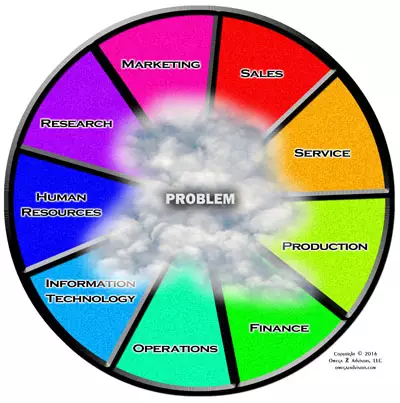Solving Problems by Challenging All Things Equal Assumption
To solve problems well, we often hear about challenging assumptions. Too often though training on this involves nothing more than playful games and puzzles. They just don’t cut it though. People need regular practice with real problems. As an example, let’s look at the all things equal assumption.
Example of All Things Equal Assumption
The all things equal assumption often appears in comparisons of two or more things. It leads people to think that anything not mentioned in the comparison is equal. For instance consider this question: Which pie has more cherries in it, one completely filled with cherries or one half filled?
The question does not mention the size of the pies. That leads us to think they are equal. Yet, size does matter. Other facts are silent too such as density and other filling. Silence leads us to think they are equal too.
This example also shows the importance of assumptions. They make communication and thought easier. We don’t have to consider all facts, just key ones. Quick, easy communication helps business. That makes assumptions hard to avoid at work.
Challenging Assumption In A Real Business Situation
Let’s move beyond this brain teaser though to tackle a real-life case I experienced. In this an investment firm had a consulting firm do a customer survey. They scored the highest mark ever recorded by the consultant for any of its clients.
Yet, the firm had lost more clients than it had gained for the last ten years. Asset-based pricing, fee increases and a super-charged stock market grew revenues and covered the problem.
When these favorable trends lapsed, they exposed the problem. How could a firm so good at customer service lose such business? Spotting the all things equal assumption gives an answer.
It’s here. The survey led us to think all customers are equal. They aren’t. Unhappy clients left. Happy ones stayed. After ten years, few unhappy clients remained to give poor ratings.
It’s like of a gallon of water mixed with a cup of sugar. It’s not very sweet. Boil off all but a cup of water though, and it’s very sweet. Basically, the investment firm “boiled off” its unhappy clients until it had a very sweet mixture of happy ones.

The all things equal assumption will prevent people from seeing the integrated aspects of a problem.
Beware of How We Define Problems
Problems are like squirrels. They don’t care how we define them. They’ll cross our mental and departmental borders without pause. Thus, we need to take care how we define and frame problems.
It’s very easy to lead people to think any silent fact in a comparison stayed the same or does not matter. For instance, “We have a sales problem,” leads people to think that the problem is not with anything else.
Assumptions though make communication and thought easier. We can’t avoid them. In business people will use them a lot. Squirrelly reality and its problems don’t care though. They do their thing regardless of what runs through our minds.
- How Challenging Assumptions Every Day Improves Problem Solving
- Challenging Assumptions Behind 1+1=2 As Case Study
- Challenging Assumptions Example
- Challenging Assumptions Exercises
- Solving Problems by Challenging All Things Equal Assumption
- 3 Common Examples of Challenging Assumptions at Work
- Challenging Assumptions in Three Black and White Thinking Examples
- Without Question Easiest Tip To Challenge Assumptions Like A Pro
- 6 Challenging Assumptions Exercises From Business


